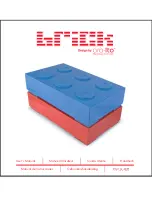
326
DS6000 Series: Concepts and Architecture
If the volume is planned for MSCP serving, then the UDID range is limited to 0–9999 (by
operating system restrictions in the MSCP code).
OpenVMS system administrators tend to use elaborate schemes for assigning UDIDs, coding
several hints about physical configuration into this logical ID, for instance odd/even values or
reserved ranges to distinguish between multiple data centers, storage systems, or disk
groups. Thus they must be able to provide these numbers without additional restrictions
imposed by the storage system. In the DS6000, UDID is implemented with full flexibility,
which leaves the responsibility about restrictions to the customer.
Command Console LUN
HP StorageWorks FC controllers use LUN 0 as
Command Console LUN (CCL)
for
exchanging commands and information with in-band management tools. This concept is
similar to the Access LUN of IBM TotalStorage DS4000 (FAStT) controllers.
Because the OpenVMS FC driver has been written with StorageWorks controllers in mind,
OpenVMS always considers LUN 0 as CCL, never presenting this LUN as disk device. On HP
StorageWorks HSG and HSV controllers, you cannot assign LUN 0 to a volume.
The DS6000 assigns LUN numbers per host using the lowest available number. The first
volume that is assigned to a host becomes this host’s LUN 0, the next volume is LUN 1, and
so on.
Because OpenVMS considers LUN 0 as CCL, the first DS6000 volume assigned to the host
cannot be used even when a correct UDID has been defined. So we recommend creating the
first OpenVMS volume with a minimum size as a
dummy volume
for usage as the CCL.
Multiple OpenVMS hosts, even in different clusters, that access the same storage system,
can share the same volume as LUN 0, because there will be no other activity to this volume.
In large configurations with more than 256 volumes per OpenVMS host or cluster, it might be
necessary to introduce another dummy volume (when LUN numbering starts again with 0).
Defining a UDID for the CCL is not required by the OpenVMS operating system. OpenVMS
documentation suggests that you always define a unique UDID since this identifier causes the
creation of a CCL device visible for the OpenVMS command
show device
or other tools.
Although an OpenVMS host cannot use the LUN for any other purpose, you can display the
multiple paths to the storage device, and diagnose failed paths. Fibre Channel CCL devices
have the OpenVMS device type
GG
.
OpenVMS volume shadowing
OpenVMS disks can be combined in host-based mirror sets, called OpenVMS
shadow sets
.
This functionality is often used to build disaster-tolerant OpenVMS clusters.
The OpenVMS shadow driver has been designed for disks according to DEC’s
Digital
Storage Architecture (DSA)
. This architecture, forward-looking in the 1980s, includes some
requirements which are handled by today’s SCSI/FC devices with other approaches. Two
such things are the forced error indicator and the atomic revector operation for bad-block
replacement.
When a DSA controller detects an unrecoverable media error, a spare block is revectored to
this logical block number, and the contents of the block are marked with a forced error. This
causes subsequent read operations to fail, which is the signal to the shadow driver to execute
a repair operation using data from another copy.
Summary of Contents for System storage DS6000 Series
Page 2: ......
Page 5: ...iii...
Page 6: ...iv DS6000 Series Concepts and Architecture...
Page 18: ...xvi DS6000 Series Concepts and Architecture...
Page 24: ...xxii DS6000 Series Concepts and Architecture...
Page 26: ...2 DS6000 Series Concepts and Architecture...
Page 44: ...20 DS6000 Series Concepts and Architecture...
Page 46: ...22 DS6000 Series Concepts and Architecture...
Page 68: ...44 DS6000 Series Concepts and Architecture...
Page 88: ...64 DS6000 Series Concepts and Architecture...
Page 136: ...112 DS6000 Series Concepts and Architecture...
Page 138: ...114 DS6000 Series Concepts and Architecture...
Page 218: ...194 DS6000 Series Concepts and Architecture...
Page 242: ...218 DS6000 Series Concepts and Architecture...
Page 266: ...242 DS6000 Series Concepts and Architecture...
Page 298: ...274 DS6000 Series Concepts and Architecture...
Page 352: ...328 DS6000 Series Concepts and Architecture...
Page 392: ...368 DS6000 Series Concepts and Architecture...
Page 396: ...372 DS6000 Series Concepts and Architecture...
Page 404: ...DS6000 Series Concepts and Architecture DS6000 Series Concepts and Architecture...
Page 405: ......
















































